Tips for Successful Surfboard Making … Shaping the Frame


Shaping your wooden surfboard starts from the frame onwards - the more precise your frame is, the better your skins will be.
Once your frame has been left for a day after the glue up, you can start the shaping journey. The shaping of the frame can be tackled in several stages which this blog will outline below!
First, you’ll want to clean up your frame from any leftover tape or dried bits of glue, removing these with a rasp and being careful of sharp bits of dried epoxy (hint: safety glasses!)
The underside of the frame is shaped first before the deck side of the frame. It’s helpful to position the frame on top of sandbags to support the concave of the frame when upside down.
We use a combination of rasp, shinto rasp and block plane.. make sure you sharpen often for a cleaner finish! A great tip is to use a thin, narrow strip of plywood (about 4-6mm) thick to mimic the skins and check the profile of the frame to see how the skins will sit.
It’s important to take breaks when you’re shaping so you can give your eyes a rest and come back fresh. When leaving your frame, ensure it rests upon the frame stands to prevent any twists from occurring.
You’ll want to shape the profile of the rails to match each rib so it is a smooth transition where they join, without shaping too much of a curve. Checking for any undulations using your eyes and fingers.
When it comes to shaping the nose and tail blocks, you’ll be referencing the marked lines inside that mimic the last rib shapes. Using the block plane to work down to the marked line to remove the waste. The beauty of making your own board means you can truly customise. The tail and nose are where people like to get creative and can shape their desired shape for their board whether its a blunt nose, square tail, fish tail..
To create the nose and tail shape we use a jigsaw to cut the bulk of the waste, along the rail sides, ensuring a square cut and then further shape with the rasp. You want the end blocks to flow nicely into the rails.
Once the underside of the frame is fully shaped and perfect, it’s time to repeat the process with the top / deckside of the frame. You’ll be shaping and fine tuning the ribs to rails and further shaping into the nose and tail block. The thickness of the tail point should be about 10-15mm and the thickness of the nose about 5-10mm, remembering that you will gain thickness once the skins go on.
You may also want to customise the concaves in the underside of the board, this requires accurate planning and marking to ensure symmetry.
With your frame shaped how you want it, there are a few more things to tackle before the skins can go on… stay tuned…
Read the previous instalments of ’Tips for Successful Surfboard Making’



